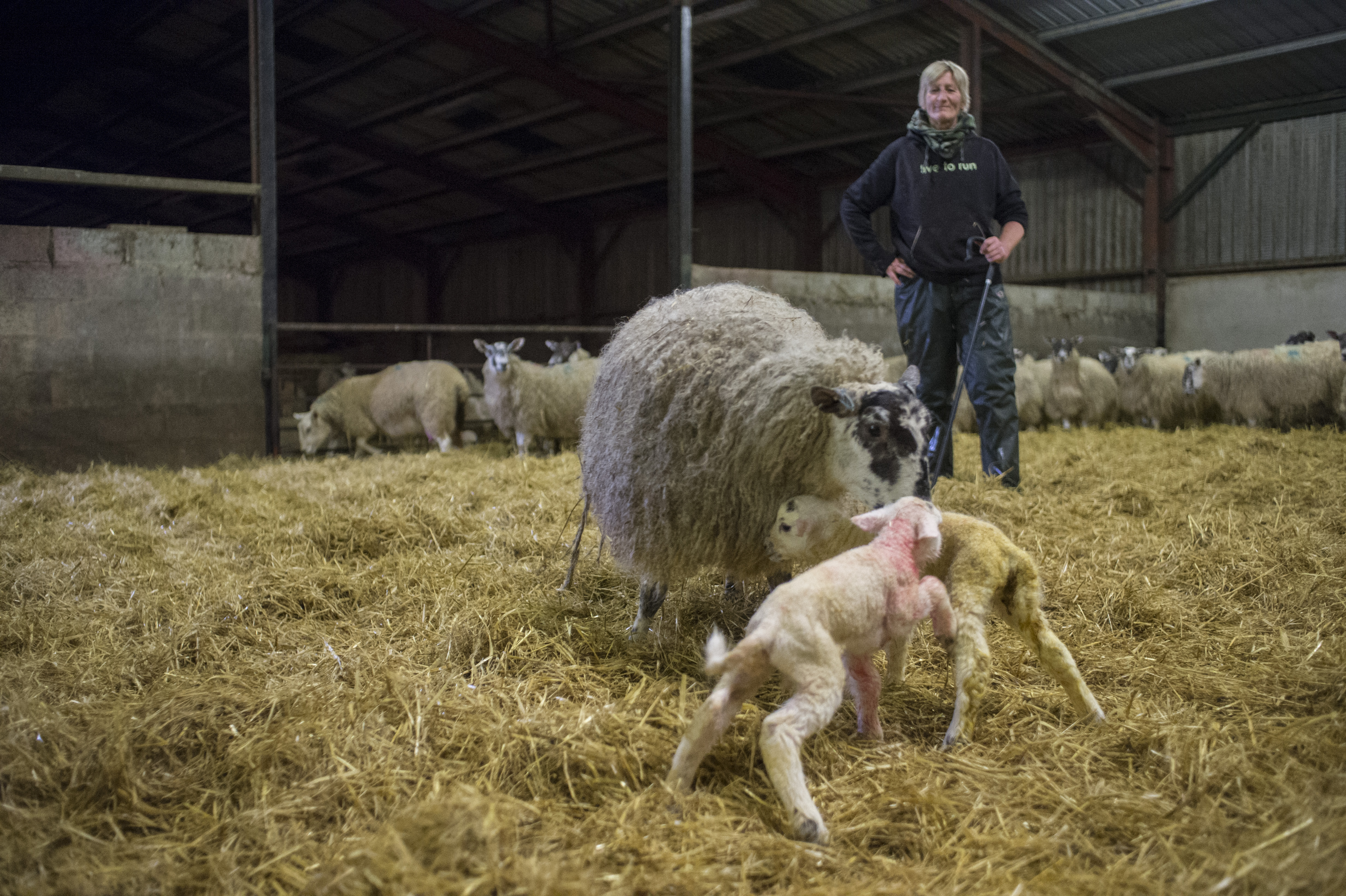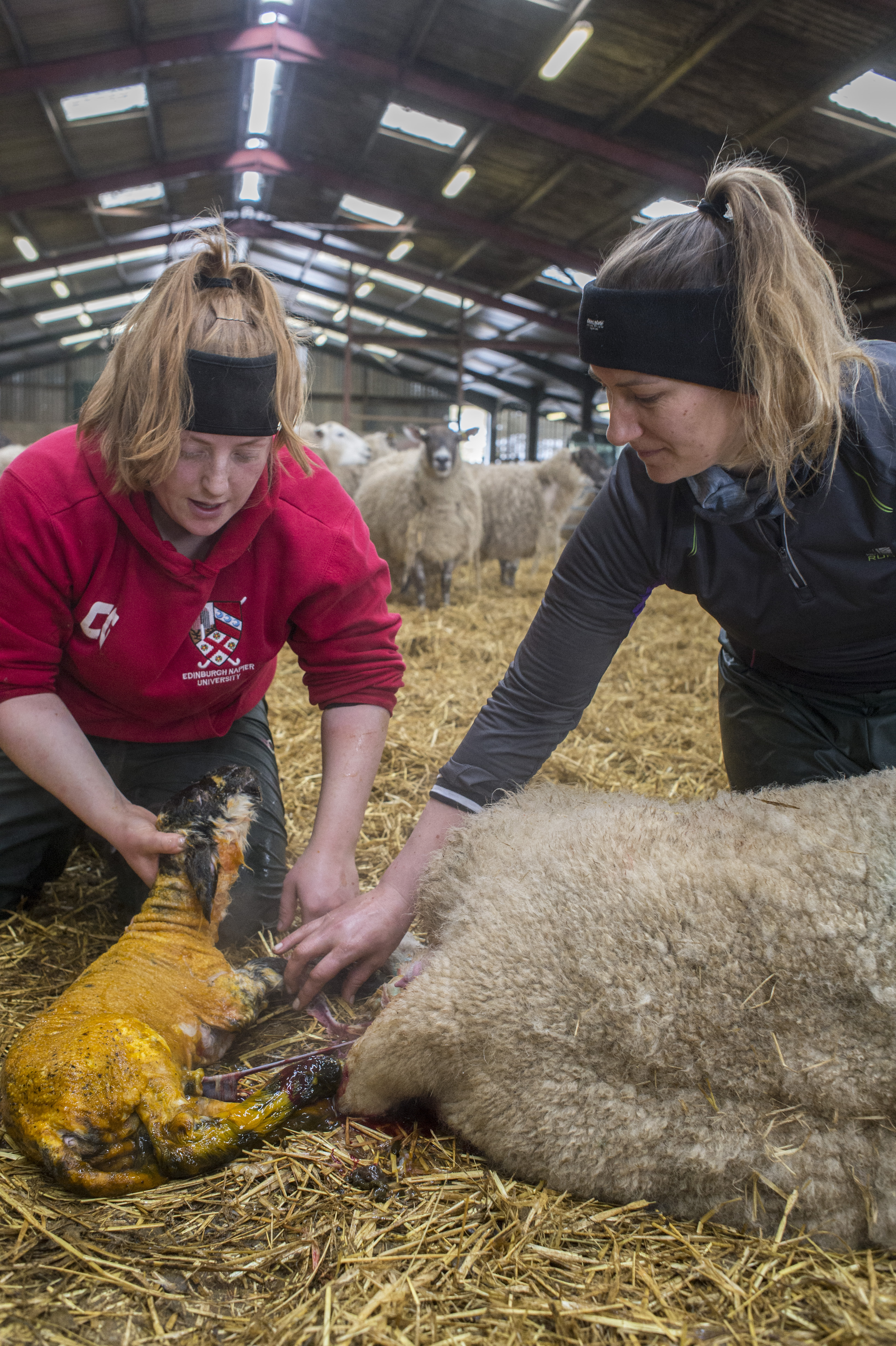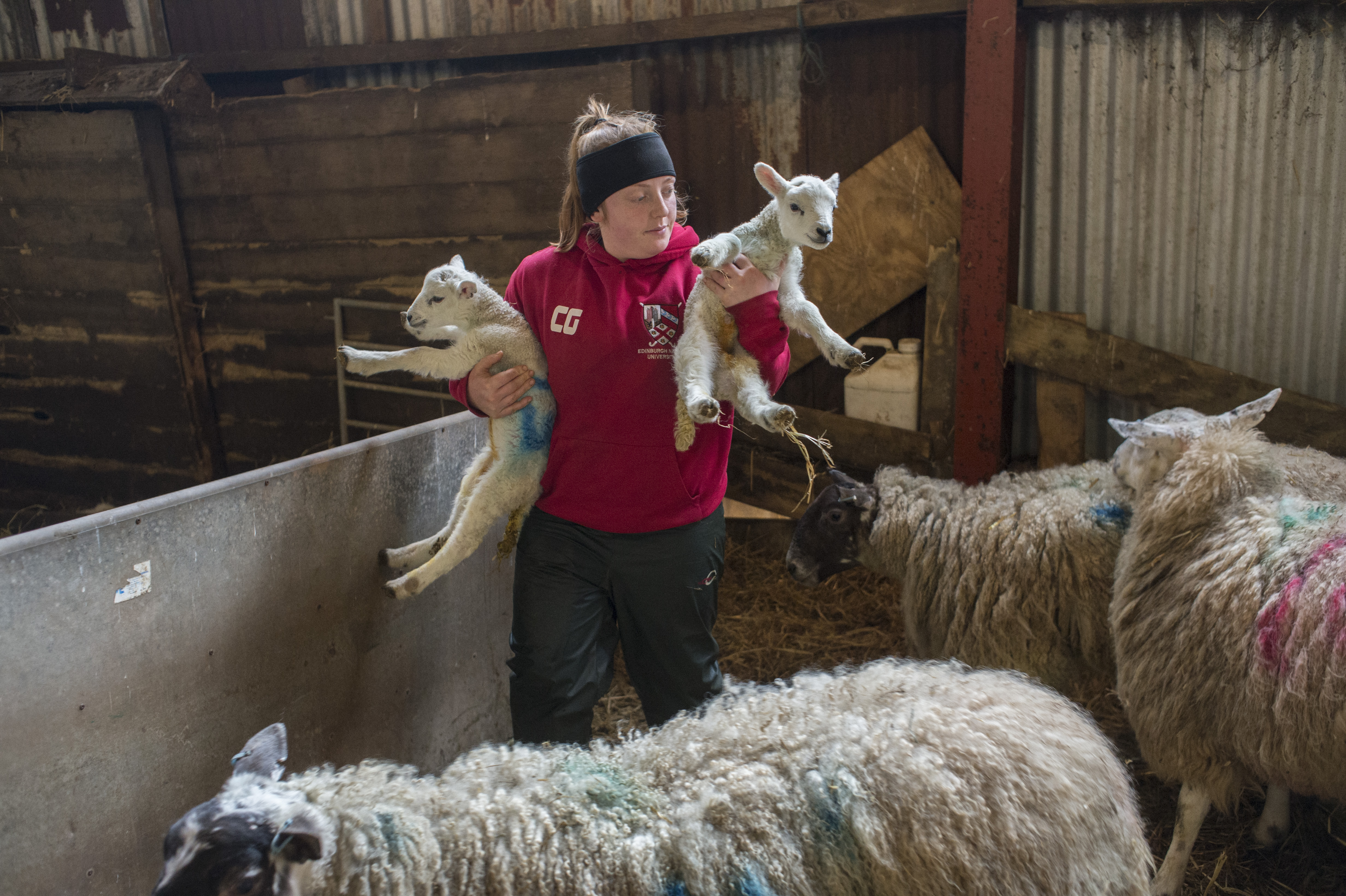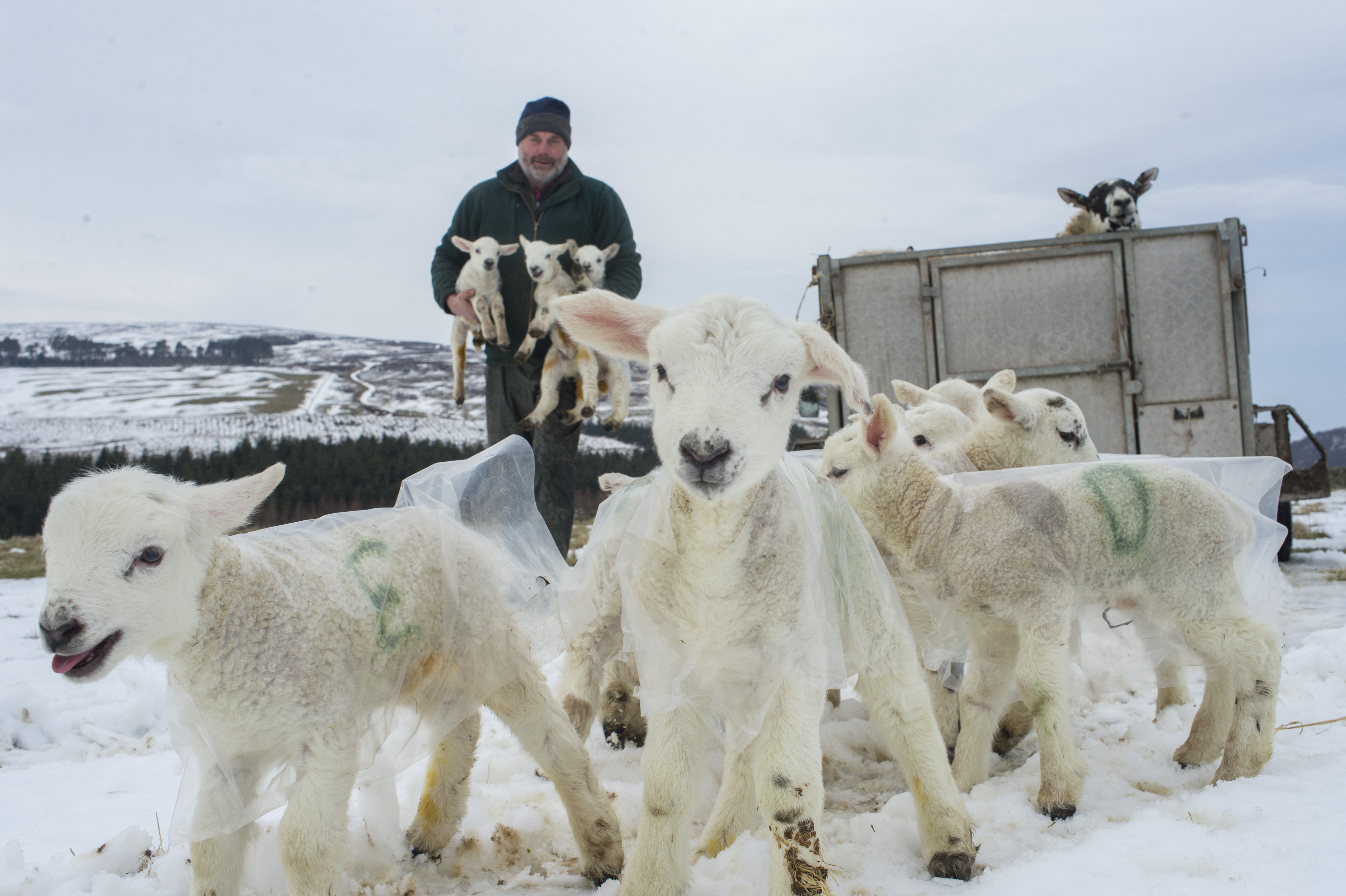
Spring has sprung as the little lambs appear
They’re synonymous with springtime, so perhaps that’s one of the reasons that the sight of the first lambs of the year always makes us smile.
It’s certainly hard not to be enchanted by the carefree little bundles of wool that clearly take so much joy in hopping around and playing together in their fields.
In days gone by these lambs would have entered the world out on the hills with little assistance or shelter, but now many hill farms employ teams to run their lambing sheds, greatly improving the lamb’s chances of survival.

Sheila Pattullo at Harehead Farm in the Scottish Borders, with some new arrivals (Photo: Angus Blackburn)
Our photographer, Angus Blackburn visited the lambing sheds at Harehead Farm in the Lammermuir Hills, near Cranshaws in the Scottish Borders to spend time with the team who bring between 2 – 2,500 lambs into the world each spring.
Sheila Pattullo works the night shift at Harehead on her own, and that’s just the way she likes it. ‘At night it’s just me, I like to work alone because it means that the buck stops with me,’ she tells me. ‘I worry about lambs dying on my watch but if they do then there’s nobody else to blame.’

Cally Gilchrist and Dee McCraw delivering lambs (Photo: Angus Blackburn)
Sheila has been delivering lambs for around 45 years, starting off on her family farm, then as a farmer’s wife and now as a job because she loves it. ‘Every birth is still a miracle. I love showing people the lambing because I get a real buzz from it.
‘I love it when people come for the first time and they feel it too. Not everyone does, some don’t like the wet and the cold and the muck, but others just get into it.

Cally Gichrist shows off a pair of new lambs (Photo: Angus Blackburn)
‘The cold is tough. Honestly, it gets so cold in the shed and it can really get to you.
‘The thing is you need to use your arms, so you can’t wrap up in multiple layers if you can’t then catch a sheep and you need to be able to help a sheep give birth, which can mean you need your arms. So you can’t wear gloves. The sleep deprivation is pretty tough too.’

Wullie Borthwick with the lambs (Photo: Angus Blackburn)
But as rewarding as lambing sheep is, Sheila struggles to attract people to join her in the sheds. ‘I don’t know why people aren’t keen to do it,’ she tells me. I’d love to have a farm where I just taught people how to do it. Because it’s a wonderful and beautiful thing and you get so much from it.
‘In my experience women are better at lambing than men, she says. And as you can tell from these images there are plenty of women involved at Harehead. ‘Women are more patient and more passionate about it. I will often see a woman sit and talk to the animals, where a man is normally more likely to think, right let’s haul this thing out. I think once you’ve had your own children you appreciate all the pushing and the contractions, but I felt it before I had my kids too. We’re all animals but I think women are somehow more in tune with it.’
TAGS

